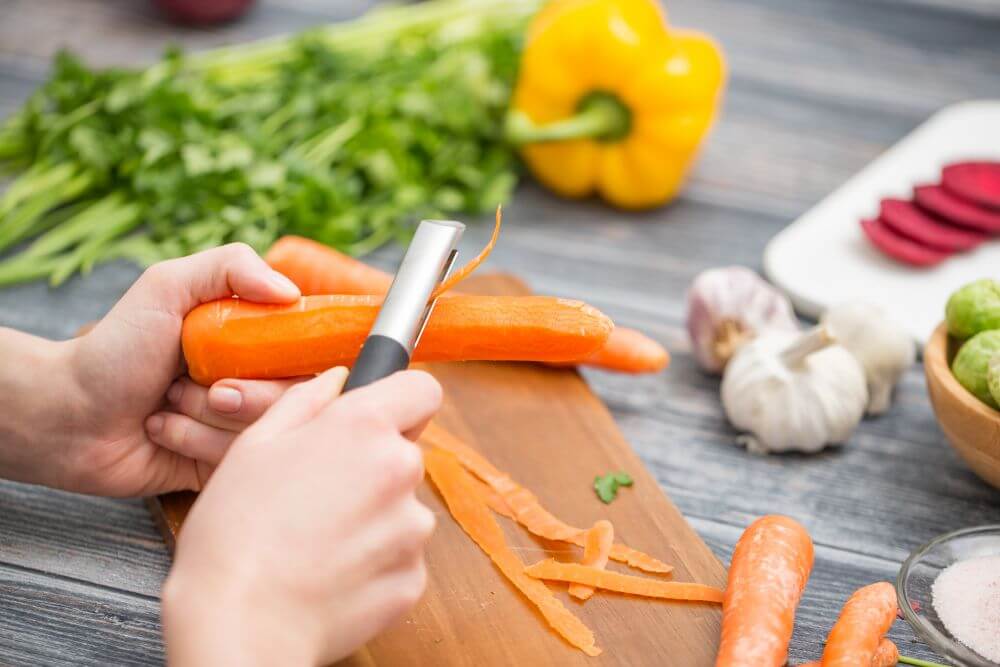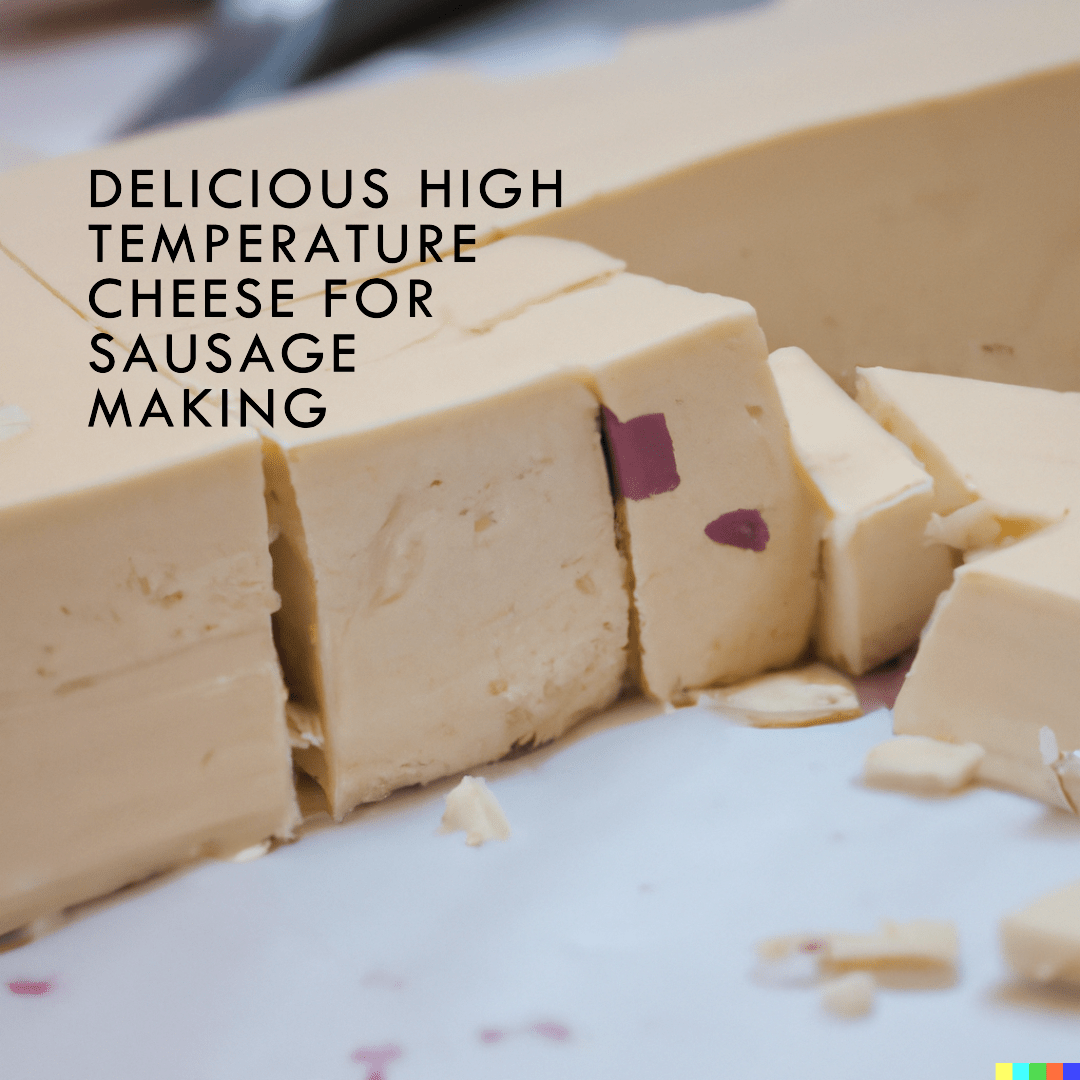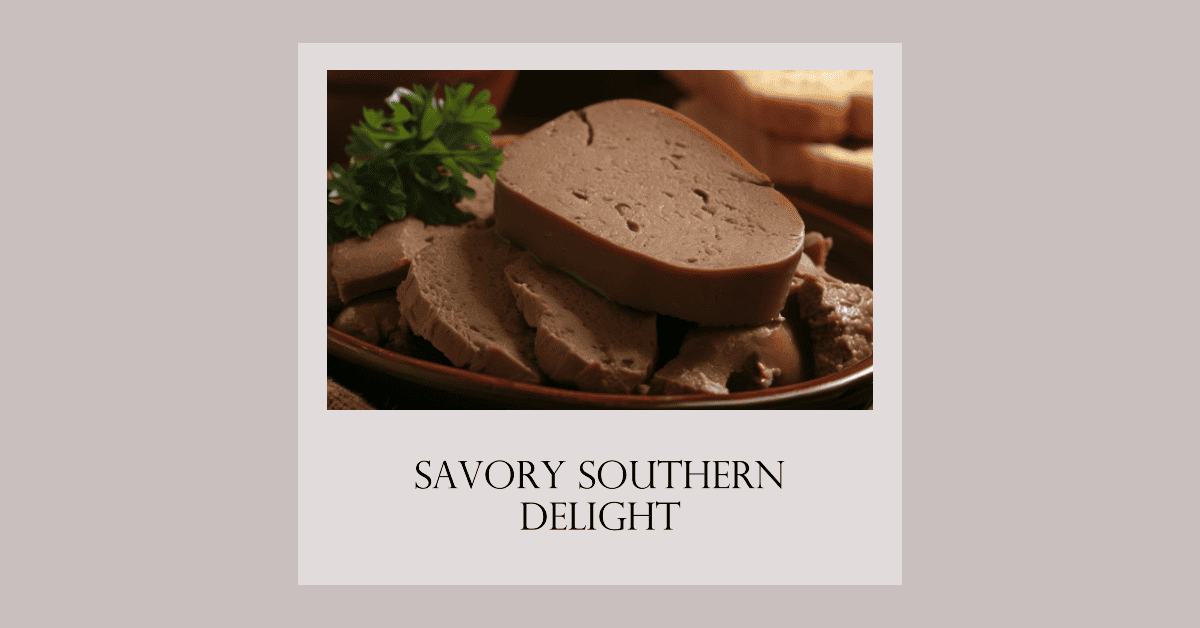Peeling root vegetables efficiently can be a time-consuming and tedious task, especially for large quantities. However, with the right equipment and techniques, it can be done quickly and easily. Whether you’re a home cook or a professional chef, knowing how to peel root vegetables efficiently can save you valuable time and effort in the kitchen.
One of the most important factors in peeling root vegetables efficiently is having the right equipment. There are many different types of vegetable peelers available, from basic handheld models to electric peelers that can handle large quantities quickly. Additionally, some vegetables may require specialized equipment, such as a mandoline slicer for thinly slicing potatoes or a spiralizer for creating vegetable noodles. By investing in the right equipment for your needs, you can streamline the peeling process and make it much easier and more efficient.
Another key factor in peeling root vegetables efficiently is having the right technique. For example, using a sharp peeler and applying light pressure can help you peel vegetables more quickly and with less waste. Additionally, some vegetables may require blanching or soaking to make them easier to peel. By learning the best techniques for each type of vegetable, you can ensure that you’re peeling them as quickly and efficiently as possible.
Source:
- https://www.seriouseats.com/2016/10/the-best-vegetable-peelers.html
- https://www.thekitchn.com/how-to-blanch-vegetables-cooking-lessons-from-the-kitchn-108570
- https://www.epicurious.com/ingredients/how-to-peel-and-cut-potatoes-article
Contents
Why Peel Root Vegetables?
Root vegetables are a staple in many diets around the world. They are versatile, nutritious, and can be cooked in a variety of ways. However, before cooking, many root vegetables need to be peeled. In this section, we will explore why peeling root vegetables is necessary and the benefits it provides.
Benefits of Peeling Root Vegetables
Safety
One of the primary reasons for peeling root vegetables is safety. Root vegetables grow in the ground and are exposed to soil, which can contain harmful bacteria and other contaminants. Peeling the vegetables removes the outer layer, which reduces the risk of food borne illness.
Improved Texture
Peeling root vegetables can improve their texture. The outer layer of many root vegetables can be tough and fibrous, making them difficult to eat. By removing the outer layer, the vegetables become softer and more palatable.
Enhanced Flavor
Peeling root vegetables can also enhance their flavor. The outer layer of some root vegetables can be bitter or have an unpleasant taste. By removing the outer layer, the flavor of the vegetable can be improved, making it more enjoyable to eat.
Increased Nutrient Absorption
Peeling root vegetables can increase nutrient absorption. The outer layer of some root vegetables can contain anti-nutrients, which can interfere with the body’s ability to absorb nutrients. By removing the outer layer, the body can more easily absorb the nutrients in the vegetable.
Aesthetics
Finally, peeling root vegetables can improve their appearance. Many root vegetables have a rough, uneven surface that can be unappetizing. By peeling the vegetables, they become smoother and more visually appealing.
In conclusion, peeling root vegetables is necessary for safety and can provide a range of benefits, including improved texture, enhanced flavor, increased nutrient absorption, and improved aesthetics. While it may be tempting to skip the peeling process, it is important to take the time to properly prepare root vegetables before cooking.
Source
- Why Do Root Vegetables Need To Be Peeled Before Canning?
- Why Should We Not Peel Root Vegetables? – Sweetish Hill
- Frequent question: Do you have to peel root vegetables?
Frequently Asked Questions
Do you always have to peel root vegetables?
While it is not always necessary to peel root vegetables, it is recommended for safety reasons. If the vegetables are grown organically and free from harmful chemicals, they can be scrubbed clean and eaten with the skin on.
Can you eat the skin of all root vegetables?
No, not all root vegetables can be eaten with the skin on. Some vegetables, such as beets and turnips, have a tough outer layer that is difficult to digest and should be peeled. Others, such as carrots and parsnips, have a thinner skin that can be eaten.
Can you eat the skin of sweet potatoes?
Yes, sweet potato skin is edible and contains many nutrients. However, it can be tough and fibrous, so it is recommended to cook the sweet potato with the skin on and then remove it before eating.
Tools for Peeling Root Vegetables
Peeling root vegetables can be a time-consuming and tedious task, especially if you don’t have the right tools. In this section, we’ll discuss the different types of peelers and other tools that can make peeling root vegetables more efficient.
Types of Peelers
There are several types of peelers available on the market, each with its own advantages and disadvantages. Here are the most common types of peelers:
- Straight Peeler: This is the most common type of peeler, and it’s great for peeling most root vegetables like potatoes, carrots, and parsnips. It has a straight blade that you run along the surface of the vegetable to remove the skin.
- Y-Peeler: This type of peeler has a Y-shaped blade that is ideal for peeling vegetables with curved surfaces like cucumbers and zucchinis. It’s also great for peeling ginger and garlic.
- Julienne Peeler: This type of peeler has a serrated blade that creates thin strips of vegetables. It’s great for making vegetable noodles or garnishing salads.
- Electric Peeler: An electric peeler is a great option if you have a lot of vegetables to peel. It’s a bit more expensive than manual peelers, but it’s a time-saver.
Other Tools
In addition to peelers, there are a few other tools that can make peeling root vegetables easier:
- Vegetable Brush: A vegetable brush is great for scrubbing dirt and debris off of root vegetables. It’s especially useful for vegetables with a rough surface like sweet potatoes.
- Paring Knife: A paring knife is great for peeling smaller vegetables like shallots and garlic. It’s also useful for removing any remaining bits of skin after using a peeler.
- Mandoline: A mandoline is a great tool for slicing vegetables evenly. It’s especially useful if you’re making a dish that requires thinly sliced vegetables like gratins or scalloped potatoes.
- Food Processor: A food processor with a shredding attachment can make quick work of peeling and shredding root vegetables. It’s a great option if you have a lot of vegetables to process.
In conclusion, having the right tools can make peeling root vegetables a breeze. Whether you prefer a manual peeler or an electric one, there are plenty of options available. Additionally, other tools like a vegetable brush, paring knife, mandoline, or food processor can make the task even easier.
Sources
- https://www.foodnetwork.com/how-to/packages/smart-shopping/shopping-for-a-vegetable-peeler
- https://www.bonappetit.com/story/best-vegetable-peelers
- https://www.epicurious.com/expert-advice/the-best-vegetable-peelers-article
Techniques for Peeling Root Vegetables
Peeling root vegetables can be a time-consuming and tedious task, especially when preparing large quantities of produce. However, with the right techniques and tools, peeling root vegetables can be done efficiently and quickly. In this section, we will discuss the preparation, peeling techniques, and tips for efficiency when peeling root vegetables.
Preparation
Proper preparation is essential for efficient peeling of root vegetables. Start by washing the vegetables thoroughly to remove any dirt or debris. Then, use a sharp knife or vegetable peeler to remove any blemishes or damaged areas. This will ensure that the vegetable is clean and ready for peeling.
Peeling Techniques
There are several techniques for peeling root vegetables. The most common method is to use a vegetable peeler. Hold the vegetable in one hand and the peeler in the other hand, and carefully peel the skin away in a downward motion. Be sure to remove all of the skin, including any remaining blemishes or damaged areas.
Another technique is to use a knife to peel the vegetable. Hold the vegetable in one hand and the knife in the other hand, and carefully slice away the skin in a downward motion. This method requires more skill and practice, but it can be faster and more efficient than using a vegetable peeler.
For larger root vegetables, such as potatoes or beets, it may be necessary to cut them into smaller pieces before peeling. This will make them easier to handle and peel, and it will also reduce the risk of injury from using a knife or vegetable peeler on a large vegetable.
Tips for Efficiency
To peel root vegetables efficiently, there are several tips to keep in mind. First, use a sharp knife or vegetable peeler to make the task easier and quicker. Dull blades can make the peeling process more difficult and time-consuming.
Second, consider using a peeling machine or automated peeler to speed up the process. These machines are designed to peel large quantities of vegetables quickly and efficiently, making them an ideal solution for commercial kitchens or food processing facilities.
Third, consider the type of vegetable being peeled. Some vegetables, such as carrots or parsnips, have thin skin that can be easily removed with a vegetable peeler. Other vegetables, such as potatoes or beets, have thicker skin that may require a knife or peeling machine.
Finally, practice proper safety measures when peeling root vegetables. Always use a sharp knife or vegetable peeler, and be sure to keep your fingers and hands away from the blade. Use a cutting board to prevent injury, and always work slowly and carefully to avoid accidents.
Sources
- https://marcelissen.com/en/treatments/peeling/
- https://sweetishhill.com/why-should-we-not-peel-root-vegetables/
- https://myeblackboard.com/peeling-of-fruits-and-vegetables/
Frequently Asked Questions
Q: Is it necessary to peel root vegetables before cooking them?
A: It depends on the type of vegetable and the recipe being used. Some recipes may call for peeled vegetables, while others may not. In general, it is recommended to peel root vegetables to remove any dirt or debris, as well as to ensure that the vegetable is clean and ready for cooking.
Q: What is the best tool for peeling root vegetables?
A: The best tool for peeling root vegetables depends on the type of vegetable and personal preference. Vegetable peelers are a common and efficient tool for peeling most vegetables, while knives may be preferred for larger vegetables or more precise peeling. Peeling machines are also an option for commercial kitchens or food processing facilities.
Common Mistakes When Peeling Root Vegetables
Peeling root vegetables can be a daunting task, especially for beginners. However, with a little bit of practice and patience, you can quickly become an expert. In this section, we will discuss some common mistakes that people make when peeling root vegetables and how to avoid them.
Not Using the Right Tool
One of the most common mistakes people make when peeling root vegetables is using the wrong tool. Using a dull or inappropriate peeler can make the task more challenging and time-consuming. The best tool for peeling root vegetables is a sharp vegetable peeler. A sharp peeler will make the job easier and faster, and it will also help you avoid wasting any of the vegetable.
Peeling Too Much
Another common mistake people make when peeling root vegetables is peeling too much. Peeling too much of the vegetable can result in a loss of nutrients and flavor. It is essential to peel only the necessary amount of skin, leaving as much of the vegetable intact as possible. You can also use a vegetable brush to clean the vegetable thoroughly before peeling.
Not Removing the Eyes
Some root vegetables, such as potatoes, have eyes that need to be removed before cooking. These eyes are small, dark spots that can be found on the surface of the vegetable. If you don’t remove the eyes, they can cause the vegetable to sprout or spoil more quickly. To remove the eyes, use a small knife or the tip of a vegetable peeler to carefully cut them out.
Not Cutting the Vegetable into the Right Size
Another mistake people make when peeling root vegetables is not cutting them into the right size. Cutting the vegetable into the right size is essential for even cooking. If the vegetable is too large, it will take longer to cook, and if it is too small, it will cook too quickly. It is essential to cut the vegetable into uniform pieces to ensure even cooking.
Not Storing the Vegetable Properly
Once you have peeled and cut the root vegetable, it is essential to store it properly. Storing the vegetable in the wrong place or for too long can cause it to spoil. It is best to store root vegetables in a cool, dry place, away from direct sunlight. You can also store them in the refrigerator in a plastic bag or airtight container.
In conclusion, peeling root vegetables can be a simple and easy task if you avoid these common mistakes. Always use the right tool, peel only the necessary amount of skin, remove the eyes, cut the vegetable into the right size, and store it properly. With these tips, you will be able to peel root vegetables efficiently and without any waste.
Sources
- https://sweetishhill.com/why-should-we-not-peel-root-vegetables/
- https://foodwastefeast.com/root-vegetables
- https://www.chemijournal.com/archives/2019/vol7issue2/PartAE/7-1-369-705.pdf
- https://casamiatours.com/vegetables-we-shouldnt-be-peeling/
Frequently Asked Questions
Q: What is the best tool for peeling root vegetables?
A: The best tool for peeling root vegetables is a sharp vegetable peeler.
Q: How much skin should I peel off of the root vegetable?
A: You should only peel off the necessary amount of skin, leaving as much of the vegetable intact as possible.
Q: How should I store root vegetables after peeling and cutting them?
A: Root vegetables should be stored in a cool, dry place, away from direct sunlight. You can also store them in the refrigerator in a plastic bag or airtight container.
Conclusion
Peeling root vegetables can be a time-consuming and labor-intensive task, but it is an essential step in preparing them for cooking or consumption. There are several methods of peeling root vegetables, each with its own advantages and disadvantages.
Mechanized peeling is a popular method for peeling large quantities of root vegetables quickly and efficiently. This method involves using abrasive materials or small blades to remove the skin from the vegetables. While it is more economical, the peelers that use blades have a neater result.
Hand-peeling is a more traditional method of peeling root vegetables but can be time-consuming and labor-intensive. However, it allows for more control over the peeling process and can result in less waste.
Another method of peeling root vegetables is by using lye. This method is mainly used in the food industry and involves the immersion of a product in lye solution, which loosens the skin and makes it easier to remove. However, it can be dangerous to handle and requires proper safety precautions.
It is essential to consider the pros and cons of each method and choose the one that best suits your needs and preferences. Additionally, it is important to wash the vegetables thoroughly before peeling to ensure that any dirt or bacteria on the skin is removed.
In conclusion, peeling root vegetables efficiently requires careful consideration of the available methods and choosing the one that best suits your needs. Whether you prefer mechanized peeling for its efficiency or hand-peeling for its control, it is important to take the necessary safety precautions and wash the vegetables thoroughly before peeling.
Sources
- Mechanized peeling of roots, onions and fruits. – Onions potatoes
- Peeling Fruits And Veggies: Pros And Cons – Preserva Wellness
- Peeling of tough-skinned fruits and vegetables: A review – Chemical Science International Journal
Frequently Asked Questions
Q: Is it necessary to peel root vegetables before cooking or consuming them?
A: While it is not always necessary to peel root vegetables, it is recommended to wash them thoroughly before cooking or consuming them to remove any dirt or bacteria on the skin. Peeling can also be beneficial as it removes any tough or fibrous skin that may be difficult to chew or digest.
Q: What are the benefits of mechanized peeling over hand-peeling?
A: Mechanized peeling is a more efficient method of peeling large quantities of root vegetables quickly and uniformly. It is also less labor-intensive than hand-peeling, which can be time-consuming and tiring. However, hand-peeling allows for more control over the peeling process and can result in less waste.





![Does Ground Beef Taste Good With Alfredo Sauce? [Answered]](https://kitchenbarrels.com/wp-content/uploads/2023/01/Ground-Beef-Taste-Good-With-Alfredo-Sauce-jpg.webp)
![Electric Smoker Won't Go Above 200? [Reasons & Fixes]](https://kitchenbarrels.com/wp-content/uploads/2022/08/Electric-Smoker-wont-go-above-200.jpg)


